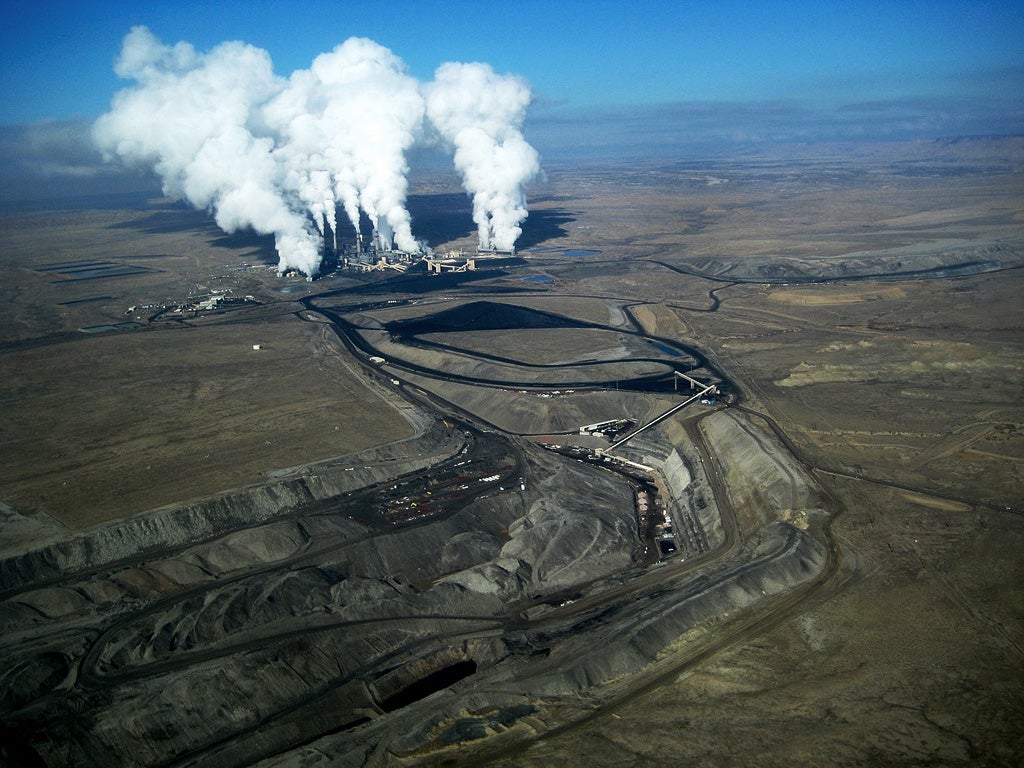Global Warming Could Devastate Human Health—but Only If We Let It
A report by 45 leading researchers makes the case that climate change is not only the gravest threat we face, but also our best chance to unite around the twin goals of sustainable growth and cutting carbon emissions.

This page was published 10 years ago. Find the latest on Earthjustice’s work.
In a setback for environmentalists, the U.S. Supreme Court ruled Monday that the EPA should have considered how much it would cost industry to follow the agency’s new Mercury and Air Toxic Standards limiting pollution from power plants. The standards are still in place, but the D.C. Circuit court now has a chance to repeal them. Coal-fired power plants are the largest industrial sources of air pollution, and air pollution kills an estimated one in 20 Americans. More worrisome, in 2013 the electricity sector was the largest source of greenhouse gas emissions in the country, driving global warming.
“After more than a decade of work by Earthjustice, the EPA issued the first ever mercury and toxic pollution standards for coal-fired power plants—rules that are now being challenged in court. Earthjustice vigorously defends the EPA’s right to enforce air and water quality rules, and we’re also working to ease the transition from dirty coal power to clean, renewable technologies like rooftop solar,” said Earthjustice Vice President of Litigation for Healthy Communities Lisa Garcia, a former senior official at the EPA.
A new report by The Lancet Commission on Health and Climate Change shows just how crucial these efforts are. The report paints a stark portrait of disease and deprivation caused by a rise in global temperatures, but also calls efforts to curb climate change the “greatest global health opportunity of the 21st century.” The report—a collaboration between Chinese and European scientists—highlights the grim costs of climate change and fossil fuel use for human health, especially in the developing world.
“The implications of climate change for a global population of 9 billion people threatens to undermine the last half century of gains in development and global health,” the report states. Decreases in infant mortality and infectious disease could be all but wiped out by heat stress, drought, flooding, storm surges, rising air pollution and less direct consequences of warming, including food insecurity and mass migration brought on by drought and the spread of mosquito- and tick-borne illness as the creatures’ habitat expands.
“Climate change has a direct and measurable effect on our planet and on the way we live our lives. Over farming and waste, toxic pollution from coal-fired power plants, the historic drought in the Western U.S.—these effects of climate change and misguided energy policies are more of a burden on low income communities and communities of color, which has resulted in huge health disparities like sky rocketing asthma rates in African American and Hispanic populations,” Garcia said.
These health impacts aren’t on the horizon—they’re here now. Humans are already facing record heat waves, the most severe of which hit Russia in the summer of 2010. According to the report, in 2010 Russia experienced more than 25,000 fires that released carbon monoxide, nitrogen oxides, aerosols and particulates into the air and even blotted out the sun in Moscow that August. The combination of heat and pollution caused an estimated 11,000 unnecessary deaths. Particulate air pollution also routinely robs people in China of more than three years of life expectancy, but The Lancet commission estimates this loss could be cut in half by 2050 with the right strategies to mitigate climate change.
That’s where the commission turns from dire warnings to hopeful prescriptions for the future. The report lays out nine concrete recommendations governments should follow to help keep global temperature rise from barreling past the accepted benchmark of 2°C:
- Invest in climate change and public health research and monitoring.
- Offer financial support to low- and middle-income countries to strengthen their healthcare systems.
- Phase out polluting coal-fired power plants from the global energy mix.
- Make cities more accommodating for bicyclists, pedestrians and public transit riders.
- Create an international carbon pricing system.
- Expand access to renewable energy in developing nations.
- Measure the health and economic gains of climate change mitigation.
- Make sure doctors and government health ministers are part of the national planning process.
- Finalize an international agreement to cut carbon emissions.
Earthjustice is already putting many of these recommendations into action in the United States. We defend the Clean Air Act and Clean Water Act from abuse by industrial polluters, and we’re leading the charge to shutter coal-fired power plants and ban destructive coal mining practices like mountaintop removal.
On a larger scale, we work to protect coral reefs from the effects of rising water temperature and acidity, to convert California—the world’s 8th largest economy—to renewable energy, to block oil and gas drilling in the Arctic and to champion international agreements to shrink greenhouse gas emissions. We’ll be covering the Paris 2015 international climate summit in late November where nations will hammer out a binding agreement to cut carbon emissions. Major emitters like the U.S. must lead by example, but it should be clear to all that we’re in this together; East or West, rich or poor, no one is immune from diseases and disasters made worse by our changing climate.